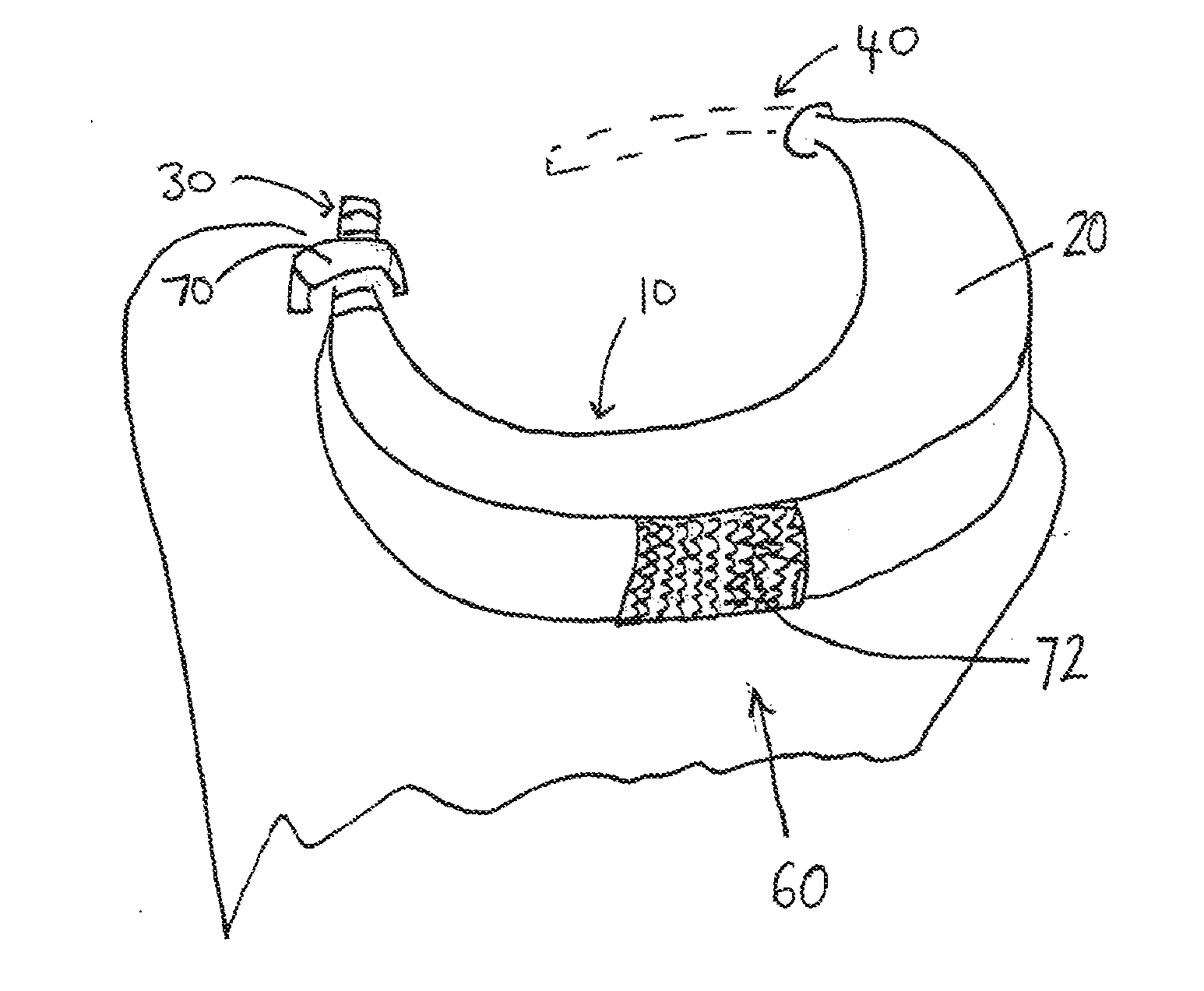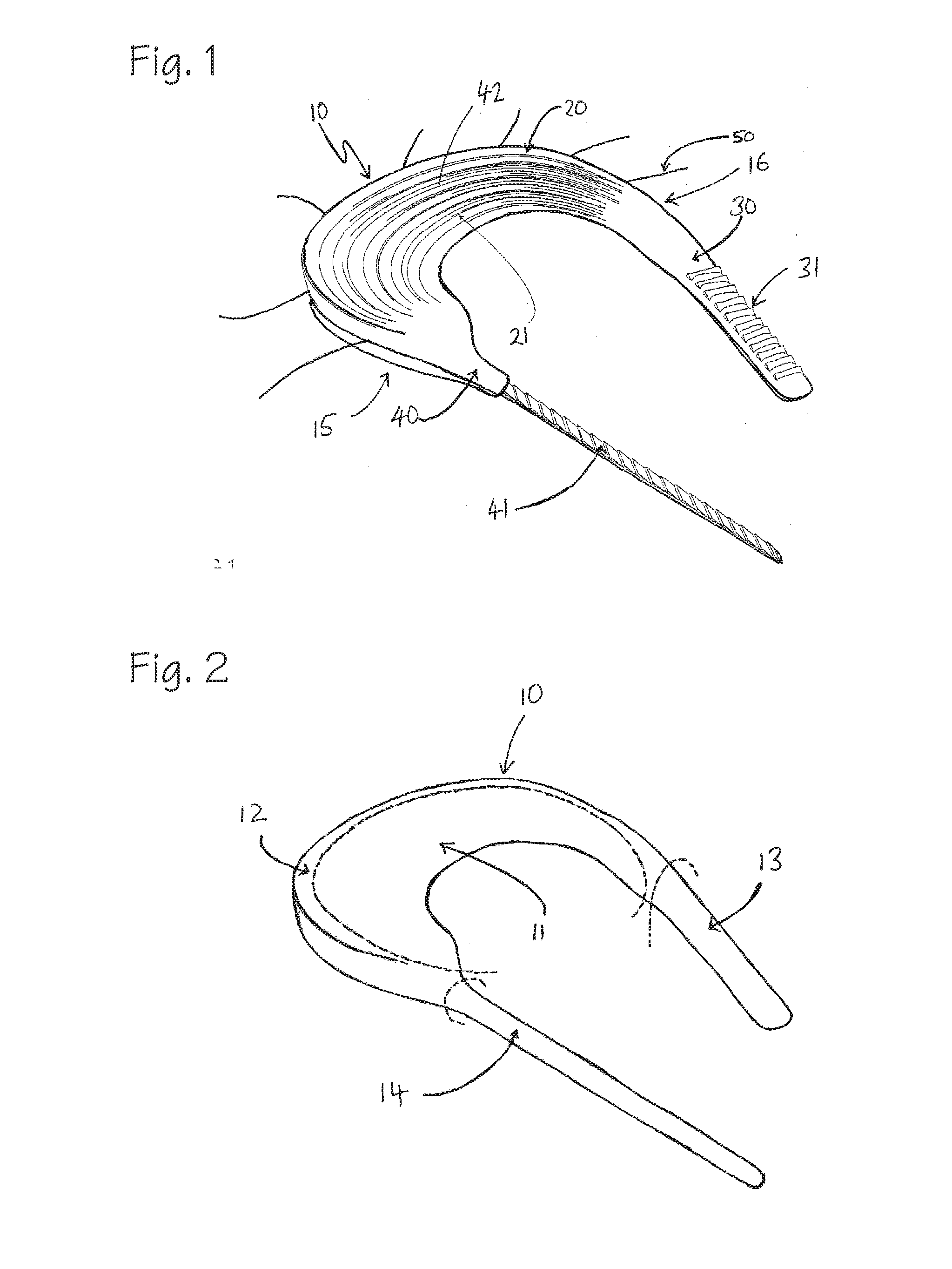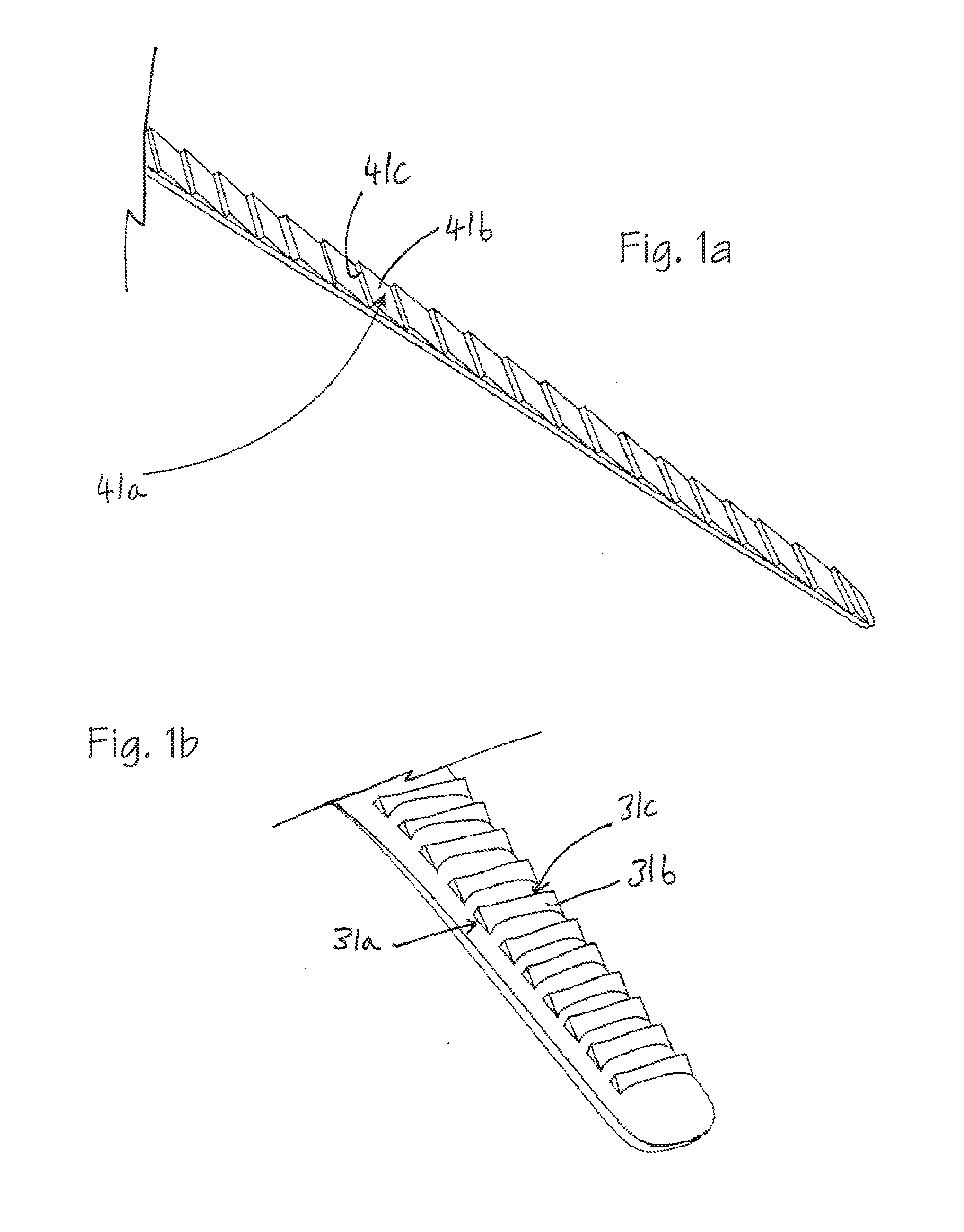Implant and Implant System
a technology of implants and implants, applied in the field of implants and implant systems, can solve the problems of poor outcome, subsequent tearing, degeneration of meniscal tissue, etc., and achieve the effect of improving the fixation of the implant device and optimising the tensioning of the implant devi
- Summary
- Abstract
- Description
- Claims
- Application Information
AI Technical Summary
Benefits of technology
Problems solved by technology
Method used
Image
Examples
Embodiment Construction
[0125]The present embodiments represent currently the best ways known to the applicant of putting the invention into practice. But they are not the only ways in which this can be achieved. They are illustrated, and they will now be described, by way of example only. Like reference numerals refer to like parts throughout the drawings.
[0126]Referring to FIG. 1, this shows an implant device 10 which may be implanted at the knee as a meniscus prosthesis device. The implant has a body portion 20 shaped approximately as a crescent (i.e. arc shaped or shaped as a segment of a circle), with a substantially wedge shaped cross-sectional shape (i.e. with the outer rim of the body portion being thicker than the inner rim), emulating the shape of natural meniscus tissue in a healthy knee joint. The body portion 20 has a bottom, or tibial face (not visible in FIG. 1), which faces the tibia when implanted and a top, or femoral face 42, which faces the femur when implanted. The body portion 20 has ...
PUM
 Login to View More
Login to View More Abstract
Description
Claims
Application Information
 Login to View More
Login to View More - R&D
- Intellectual Property
- Life Sciences
- Materials
- Tech Scout
- Unparalleled Data Quality
- Higher Quality Content
- 60% Fewer Hallucinations
Browse by: Latest US Patents, China's latest patents, Technical Efficacy Thesaurus, Application Domain, Technology Topic, Popular Technical Reports.
© 2025 PatSnap. All rights reserved.Legal|Privacy policy|Modern Slavery Act Transparency Statement|Sitemap|About US| Contact US: help@patsnap.com



